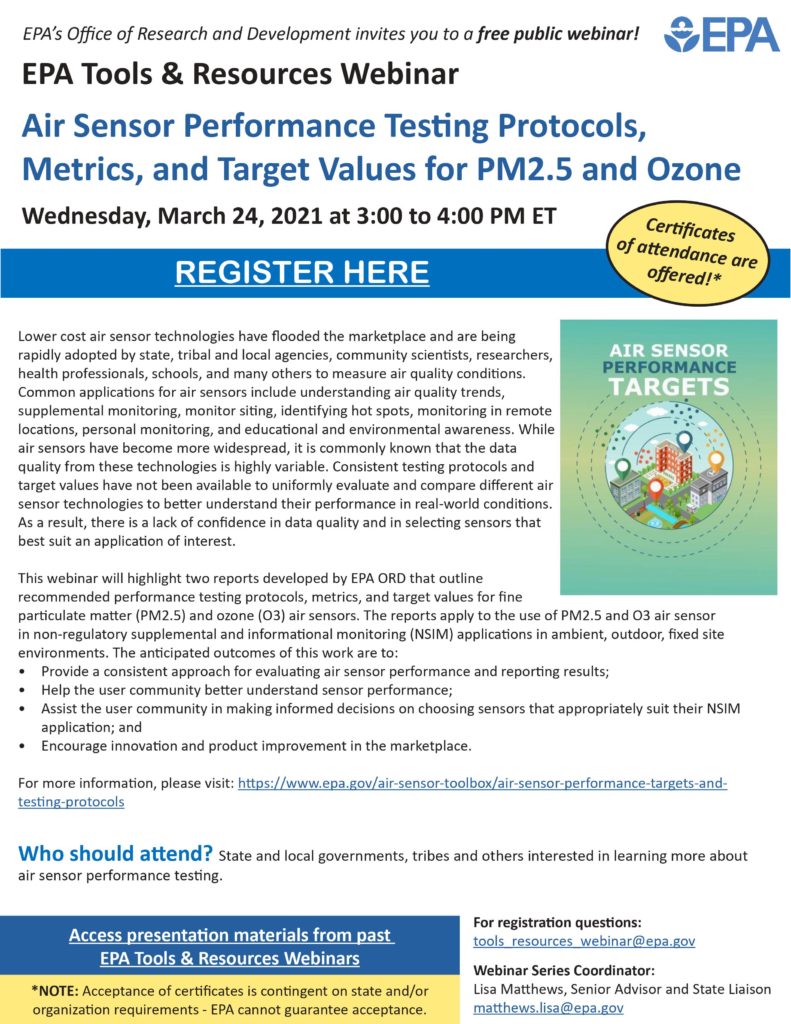Lower cost air sensor technologies have flooded the marketplace and are being rapidly adopted by state, tribal and local agencies, community scientists, researchers, health professionals, schools, and many others to measure air quality conditions. Common applications for air sensors include understanding air quality trends, supplemental monitoring, monitor siting, identifying hot spots, monitoring in remote locations, personal monitoring, and educational and environmental awareness. While air sensors have become more widespread, it is commonly known that the data quality from these technologies is highly variable. Consistent testing protocols and target values have not been available to uniformly evaluate and compare different air sensor technologies to better understand their performance in real-world conditions. As a result, there is a lack of confidence in data quality and in selecting sensors that best suit an application of interest. This webinar will highlight two reports developed by EPA’s Office of Research and Development that outline recommended performance testing protocols, metrics, and target values for fine particulate matter (PM2.5) and ozone (O3) air sensors. The reports apply to the use of PM2.5 and O3 air sensor in non-regulatory supplemental and informational monitoring (NSIM) applications in ambient, outdoor, fixed site environments. The anticipated outcomes of this work are to:
- Provide a consistent approach for evaluating air sensor performance and reporting results;
- Help the user community better understand sensor performance;
- Assist the user community in making informed decisions on choosing sensors that appropriately suit their NSIM application; and
- Encourage innovation and product improvement in the marketplace.
March 24, 2021 3:00-4:00 PM ET
For more information, please visit: https://www.epa.gov/air-sensor-toolbox/air-sensor-performance-targets-and-testing-protocols

